Tweeks: Wynonna Earp Comics
This week Maddy talks all about Beau Smith’s Wynonna Earp comics — both old & new (there’s a blonde AND a brunette Wynonna… kind of like another favorite of hers, Gidget)!
This week Maddy talks all about Beau Smith’s Wynonna Earp comics — both old & new (there’s a blonde AND a brunette Wynonna… kind of like another favorite of hers, Gidget)!
I must have encountered Archie Comics while I was still young and innocent before the brassy hell we knew as high school — and military high school at that – before I began my ten-year abstinence from reading comic books. I can’t remember a time when Archie and his pals and gals weren’t on my radar somewhere (though the blip was probably dim and small. One of those deals where I knew something but didn’t know I knew it.)
The Archie posse was one of a bunch of similar groups that were sprinkled throughout the media in the years immediately before and after the Second World War. But the genre was born decades earlier, in the 1920s when the younger set began to be identified as a consumer group with few bucks in their pockets. The fictional teens got a boost from a series of movies starring Mickey Rooney as the lovable Andy Hardy, and then came the comics featuring guys and gals with names like Candy, Binky, Corliss Archer, Henry Aldrich, Patsy Walker. True confession: I once, briefly contributed to the Patsy scene. Way more fun than high school.
These stories, which might have been mistaken for sitcoms on a dark night, featured slightly cartoonish but attractive adolescents romping their way through high school and related activities – dances, games – and having disagreements with both peer groups and authority figures These squabbles weren’t serious and did not seem likely to put the teens on the path to juvie. Detention was all they had to worry about.
They were no respecters of media boundaries, these scamps. Some had radio shows back when network broadcasts were major sources of light entertainment. and young master Aldrich appeared in a series of movies. Most perished when comics were attacked by the political and muckraking witch hunters of the 50s and early 60s.
But not Archie. He continued to appear wherever there was a decent comic book store from his war-era debut straight on through to the present. Maybe we shouldn’t be surprised that he and his crew are on the tv. Yep, there they are in a weekly show titled Riverdale, Thursday evenings on the CW.
I could never identify with the comics’ Archie, who seem to have his friends, male and female alike, grafted to his hip. I was a loner (with a uniform). But Marifran was pretty much a typical teen who hung out with kids I didn’t know and did teenage things. (She also went on dates with me. I don’t think I wore my uniform.) The CW Archie doesn’t reflect my adolescence, which was to be expected, but it’s nothing like Marifran’, either.
This Riverdale is a series saturated in angst and gloom and the video Archie is involved in stuff the comics Archie would never have heard of, including an improper relationship with a teacher. Tch! So Riverdale’s world mirrors ours. It ain’t a barrel of laughs, but It’s well-enough done to merit another look. Maybe.

Split is over a week old and that’s usually enough to disqualify a movie from coverage here. (This is the policy that keeps me from reviewing Blade 2 every six months in a vain attempt to force it in to the conversation for best superhero movie of all time.) But Split had a secret, and that secret didn’t get out until the movie had released and I had already watched the movie for last week. I’m going to talk about this secret right off the bat so if you have somehow avoided this piece of information I will tell you that Split is an excellent horror movie that might be a bit tame in the sheer terror aspects but is totally worth watching especially if you’ve liked M. Night Shyamalan’s works in the past. From here on it’s spoilers on; stop reading if you want that undisturbed experience.
We’ll wait for you below.
…….
……
…..
….
…
..
.
Before this January, I’d been to many comic cons but I’d never been on a cruise. I loved the idea of going on one, though; as well as the concept and aim of the first Fan2Sea comic con cruise: which was to give fans the best experiences of comic cons – good seats at panels, VIP parties, getting to meet the guests, getting sketches from artists, and all of that – but without the crowds and lines and hassle. In essence, the goal was for everyone’s experience to be an extra-special experience; and on top of that, to have it in a super-cool, chill venue with other fun activities in between all the fan goodness, and with opportunities to actually get out and see the sights as well.
Well: Mission. Accomplished. In a way that was even better than I’d imagined… and I have a pretty good imagination.
As I and another longtime comics and con reporter were discussing, at what other comic con could you go from a VIP party chatting with actors from The Walking Dead, Guardians of the Galaxy, or Stranger Things to your room to pick up your bathing suit, and out into the starry night sky for some relaxing nightswimming in the pool deck hot tub, simply by taking the elevator? And at what other con would Day 1 not end with tired arms and feet from carrying a bunch of stuff around and walking miles of unforgiving concrete floors? And at what other con could you always easily find some good food that’s already included in your room cost (so you don’t have to worry about nickel-and-diming yourself if you get a craving for, I don’t know, soft-serve ice cream at odd hours). Or go sit down for a fancy meal with no reservation just by walking up with your party? Or schedule a spa treatment that’s right upstairs? Oh, and at what other con would you also, if you didn’t feel like going to a panel or meeting guests or getting your cosplay makeup professionally done or attending a comics Master Class or vying for geek pub quiz prizes, be able to just go play some pool or basketball or mini-golf or air hockey or arcade games or watch a slew of themed movies in a real cinema by, again, just taking the elevator? What about rock-climbing? Swimming? Gambling, if that is your wont? Or just exploring the vast space and opportunities for fun of the venue itself. In other words, at what other con would your overall vacation experience be this awesome?
I know, I know, I’m over-enthusing. But the answer is: none. No other con. There is no other con like this one, and I’m in love. Because yes, the best part of cons is the con guests and programming; but having all of the other features available, and still giving a con the convenience and intimate feel of a smaller hotel-based type of con without losing the star and program quality, ups the ante in a way I’ve not experienced at a comic-con before. I’m sold, you guys. Totally sold. If this con happens again (and it should, because for a first year con they did pretty much everything right, and every single guest or attendee I asked was having a fantastic time) it will be going in my con calendar as a can’t-miss. And trust me, you’ll want to follow my lead on this one.
But now, on to some more specifics! It was great to be on board (literally! I love that) for the inaugural outing of Fan2Sea. First off, the accommodations were very nice. Sure, the standard rooms aren’t huge – but they definitely comfortably fit at least two people, and wow, do they ever have a ton of storage space tucked away in odd corners. Roomie Adriane Nash (and ComicMix assistant editor) and I quickly unpacked our things into the many cabinets and drawers on the first day and were able to easily store our (giant!) empty suitcases out of the way in the closet for the rest of the trip, which gave us a nice settled feeling. We also really loved our balcony, on which we watched the ocean go by (very soothing!), ate breakfast, chilled, drank wine, and marveled at the amazingly clear stars. And the housekeeping folks were great, and kept our little room tidy and comfy for us (and even made us little origami animals out of clean towels!).
 Next, From Day 1 I loved seeing the thought the Fan2Sea team had put into theming the whole ship so that it really felt like the con had the run of the place. From life-sized Batman and Spider-Man decals on the glass elevators to giant “Fan2Sea” floor and flag decor, to a fully Sin City-themed casino and bar list, to even the bar napkins sporting the Fan2Sea logo, it felt like the team behind this con really knew how to welcome the fans and was as excited as we were to be on board.
Next, From Day 1 I loved seeing the thought the Fan2Sea team had put into theming the whole ship so that it really felt like the con had the run of the place. From life-sized Batman and Spider-Man decals on the glass elevators to giant “Fan2Sea” floor and flag decor, to a fully Sin City-themed casino and bar list, to even the bar napkins sporting the Fan2Sea logo, it felt like the team behind this con really knew how to welcome the fans and was as excited as we were to be on board.
And that was completely true, from the staff members I met. Every Fan2Sea staff person I talked with was excited, enthused, and accommodating – there to ensure that everyone had the best time possible. My special shout-outs to those who made my personal experience on board top-notch would include Stefan Lawrence (who was literally everywhere making sure nothing went “sproing,” as every good con-runner should be), Michael D’Alessio (who provided a consistent and upbeat voice and mood for daily announcements and hosting of a number of events), Mary McDonnell (whose help from the minute I walked into the port Terminal was awesome, and whose enthusiasm and happy spirits were infectious), Jenny Weinbloom and Kevin Kalbfeld (who were super nice and fun to talk with), and Constance Eza (about whom every artist she worked with for Artist Alley, etc. said good things).
I also appreciated the wisdom of the organizers seeking out beforehand panel moderators who had been to many comic cons before and really knew their stuff. I was super happy to moderate the Deadpool panel (which was awesome!), but also really glad to meet the other moderators at our prep meeting before the schedule got underway. Not only did I make some new friends, but also it’s just nice to have a little time to sit down with others who do what I do (or similar) and chat. Fan2Sea provided us with that opportunity and relaxed setting; and picking outside moderators who knew what they were doing really helped make the panels fun, too!
Of course, new friends are fun but old friends are always awesome, and I was pleased as punch to be in a chill con environment with a number of my con friends. At regular cons, and especially the big, spread-out cons with several hotels, venues, conflicting parties, and the like, if you’re a reporter it can be hard to actually just find time to hang out with others in the industry, or with other con-goers. There’s always a ton of texting and, “Where are you now?” “Is the panel full? Are there seats?” “Is that bar all the way across town??” and “Oh, can I go to that party with you, or is there a list I didn’t know about in time?” type of communications. But the cruise ship venue made it super easy to meet up or run into friends and decide to do something together without it being a big production or hassle. And while the program options certainly weren’t limited, the way the schedule didn’t pit too many big items against each other at a time pretty much guaranteed that if there was a big event going on, at least one of your friends was going to be there.
I could probably go on about all the great general setting and vibe things that made this con amazing, but I think you get the idea. The setting and accomodations were great, the vibe was great (a con that feels relaxing to attend! Who knew it was possible!?), the activities were great, and the people were great. And at the risk of using “great” too much, I had a great time!
But speaking of time, that’s all I have time for this column! So stay tuned for my next recap, which will include the details of my daily adventures with guests, panels, pub quizzes, master classes, Artist Alley, and outings, along with a slew of fun pics! And until then, Servo Lectio!
Wow, the past 12 days have been a whirlwind of change, and I am not talking about comics. It’s incredibly hard to write about anything but the ever-changing world that we live in. It affects the very fabric of reality, and it ripples through space and time. But as in any and every art form, the impact of the current political and social climate is already being seen.
Over the past few months we have seen the influx of protest pieces on social media, from art to music to videos to memes and more. Yes, I know that memes as art is a stretch but they are created as form of expression, which is what art really represents. As artists continue to create political pieces, the fans who rally around them need to how to respond.
One such piece is this essay by Saturday Morning Breakfast Cereal. SMBC isn’t normally a political comic but creator Zach Weinersmith hit his limit and felt the need to write down his thoughts. He spoke about his family’s immigrant past, and expressed his disdain for the current hate against other countries. He also writes that he is ready to use his voice, writing letters to politicians.
Angela Webber of the geek music duo The Doubleclicks wrote an article for The Mary Sue about her difficulty with creating in this turmoil. She poses the question about why should she create art when all of this is happening? Ultimately, she vows to continue on with creating art, and not just because she can. She reminds us that through art, hope can spring up. That when art is created, it can be a powerful force to sway hearts and minds.
Another is the art piece above that has gone viral. It’s by artist Yusef Abonamah, and it illustrates two people who we consider American heroes, but are the very types of people that our current government has been vilifying these past two weeks. It is a powerful message to all comic fans – especially if you think about all the times they tried to kick Superman off the planet and how that turned out.
The truth is, our superheroes embody all the traits that we all hope to emulate. We want to be able to make the sacrifices that Wonder Woman and Superman make to protect others and do the right thing. We may be mere mortals, but ascribing to more makes us better.
As we look at the art born of this current unrest, I hope that you find something that speaks to you. Something that grabs you and compels you to think, feel, act in the best interest of yourself, the country, and the world. And if you feel so inspired, perhaps you will create some art yourself.
FIRST SPOILER ALERT: This week’s column is going to reveal all sorts of dark, nasty, sinister and provocative stuff about the new Riverdale series on The CW. If you haven’t seen the show and you intend to do so and you’re not going to be illegally downloading it, you might want to avoid the considerable amount of wit and wisdom that follows.
SECOND SPOILER ALERT: The aforementioned wit and wisdom will implant an image in your brain that you may never be able to get rid of. You have been warned!
Archie Andrews has sex with Miss Grundy in the back seat of a Volkswagen.
I guess I should applaud any 75-year old dude who gets to have sex with his high school teacher. And maybe I do, except that Geraldine Grundy did commit statutory rape. Then again, Archie’s probably tired of being harassed by Waldo Weatherbee and if he knew Waldo has the hots for Geraldine, he might have been indulging in an act of revenge.
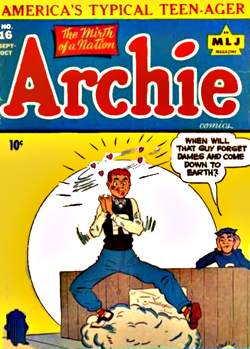 Also then again… in the Riverdale television series Archie has been established as a sophomore. That puts him at the age of 15 or 16, and if Archie really is your “typical teen-ager” if given the opportunity he’d have sex with a plot of warm mud. And a tip of Waldo’s toupee to Lenny Bruce for providing me with that lovely illusion.
Also then again… in the Riverdale television series Archie has been established as a sophomore. That puts him at the age of 15 or 16, and if Archie really is your “typical teen-ager” if given the opportunity he’d have sex with a plot of warm mud. And a tip of Waldo’s toupee to Lenny Bruce for providing me with that lovely illusion.
I’ll assume they’re setting up a storyline wherein Miss Grundy gets busted for statutory rape and Archie is left trying to explain the situation to his sundry objets d’ amour. And he’s got a lot of them: Veronica Lodge, Cheryl Blossom, Betty Cooper (in fact, she’s the one in love with Archie, a love that has been unrequited since before the attack on Pearl Harbor), and – I’m guessing here –Josie McCoy of Pussycats fame.
And, since I have your attention, shouldn’t the Pussycats trade-in their little kitty-ears for pink knit caps? C’mon, get on the bandwagon, ladies!
The Riverdale teevee series has been well received by critics and either loved or hated by Archie comics fans. It’s not your father’s Archie. It’s not your grandfather’s Archie. But it absolutely is Archie if said universe were to have been created today – and if it were not done as a comedy.
As every critic has pointed out, Riverdale is very much in the vein of The CW’s stereotypical programming. It’s a romantic thriller with all sorts of dark nooks and crannies. Archie Comics have done these types of stories before, particularly in the recent Life With Archie and Afterlife With Archie series. In fact, the latter was (or is, depending on if they’ll ever continue the series) written by Roberto Aguirre-Sacasa, the creative director for Archie Comics and the writer/executive producer of Riverdale. There’s nothing wrong with that, and the sundry Archie characters have been so well established that they make the transition from comedy to melodrama with ease.
I enjoyed the Riverdale pilot, which is noteworthy in that I am far, far removed from The CW’s target audience. Of course there is a lot of set-up in that first episode, and Jughead was barely in it outside of his role as narrator. Much of the comic relief falls to Kevin Keller, which works nicely. As for Hiram Lodge being the show’s Gordon Gekko, leaving his wife Hermione to try to renew her relationship with a now-divorced Fred Andrews and thereby complicating the Veronica/Archie side of the romantic polygon, then Riverdale might not be your cup of tea.
Actually, reread that last sentence and remember my opening bit about the Volkswagen. If you can’t handle those truths, then Riverdale certainly is not for you. But I’ll be watching it, at least until I walk away muttering about what’s wrong with these kids today.
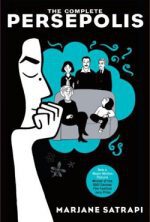 Last week it was revealed that at least a couple of eras were at an end: one, America’s new immigration policies diminishing our reputation here and around the globe, and the New York Times no longer including a list of best selling graphic novels. As much as I would love to discuss the former, this is a site about comics and pop culture, so I’ll focus on the latter.
Last week it was revealed that at least a couple of eras were at an end: one, America’s new immigration policies diminishing our reputation here and around the globe, and the New York Times no longer including a list of best selling graphic novels. As much as I would love to discuss the former, this is a site about comics and pop culture, so I’ll focus on the latter.
After eight years of having best seller lists featured weekly at the New York Times, it was announced with little warning that this week would be the last featuring such a list. This information was confirmed with little to no logical reason by NYT editor Pamela Paul via Twitter. Graphic novels will be folded back into fiction, making it more difficult to make the list and preventing many graphic novels from ever being able to obtain status.
Many creators, including Neil Gaiman, questioned this decision and aired their frustrations with odd, confusing, and seemingly ill-informed responses from Pamela Paul. One thing she did promise, however, was expanded coverage in terms of reviews and discussion on comics and graphic novels.
Here’s where I tell you that’s a bad deal.
 While, yes, I absolutely support expanded coverage of comics and graphic novels, that in no way should ever be an either/or situation. Also, ask a comic company what it can do marketing wise with more write ups. It may be positive, but doesn’t even come close to being able to slap the very coveted “New York Times Best Seller” label on your graphic novel. No press can replicate that. None.
While, yes, I absolutely support expanded coverage of comics and graphic novels, that in no way should ever be an either/or situation. Also, ask a comic company what it can do marketing wise with more write ups. It may be positive, but doesn’t even come close to being able to slap the very coveted “New York Times Best Seller” label on your graphic novel. No press can replicate that. None.
Graphic novels have benefited greatly from being able to have their own lists. Combining them with other lists only hurts them. There’s very literally no positive to this. None. Even if they got nine slots on a combined list, that’s still less than the ten they had before.
One of the graphic novels that made the bestseller list in the past is Persepolis, the story of a young woman growing up in Iran and watching the country and the world change. Getting on the bestseller list helped the book. More people heard about it and looked into it. It’s exactly the kind of graphic novel we need to be reading today. If more stories like Persepolis came out after they remove the lists, large swaths of people may never hear of it and we’ll be denied important reading material being elevated where it needs to be to better serve society. A society that’s far too ignorant of the lives of those from the countries our President has banned, and from a country that has banned us right back.
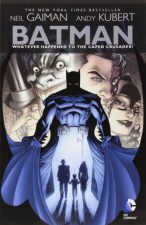 Another graphic novel about a country we’ve banned that made the bestseller list in the past is The White Donkey. It’s the first graphic novel about the Iraq War created by an actual veteran detailing a lot of the tedium as well as the mental health issues brought on through war. It’s an important story and something people here should read to understand what our own citizens went through for a war that at one time had majority support. Again, this is a graphic novel that got legitimacy, praise and sales by making it on the bestseller list. Another story like it may not now.
Another graphic novel about a country we’ve banned that made the bestseller list in the past is The White Donkey. It’s the first graphic novel about the Iraq War created by an actual veteran detailing a lot of the tedium as well as the mental health issues brought on through war. It’s an important story and something people here should read to understand what our own citizens went through for a war that at one time had majority support. Again, this is a graphic novel that got legitimacy, praise and sales by making it on the bestseller list. Another story like it may not now.
Look, I understand that the New York Times is a privately owned company. They have absolutely no obligation to anyone to create bestsellers lists. However, these sort of moves have helped to keep the New York Times in high regard amongst many communities including the comics community. While I acknowledge that this is a private company’s decision, I’m also going to acknowledge that the decision is needlessly hurtful to a segment of publishing that’s been expanding by double digits and is now a billion dollar industry.
I hope it’s not too late to change course. I hope someone from the New York Times reads this. I hope Pamela Paul in particular reads this. And I hope that they all consider the inherently negative consequences of their actions to large and growing community.
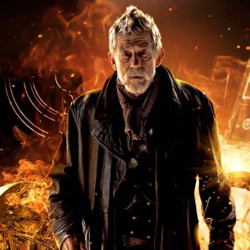 Sir John Hurt died a few days ago. One of Great Britain’s finest actors, his rise started with his turn as Robert Rich, a courtier and lawyer in Henry VIII’s court, in Fred Zimmerman’s A Man for All Seasons. The movie, based upon Robert Bolt’s play about the fall of, British Lord Chancellor Thomas More, could be considered a science fiction story as it deals with a perfectly harmonious island society that was nowhere to be found in More’s 16th century – or in the 21st, for that matter.
Sir John Hurt died a few days ago. One of Great Britain’s finest actors, his rise started with his turn as Robert Rich, a courtier and lawyer in Henry VIII’s court, in Fred Zimmerman’s A Man for All Seasons. The movie, based upon Robert Bolt’s play about the fall of, British Lord Chancellor Thomas More, could be considered a science fiction story as it deals with a perfectly harmonious island society that was nowhere to be found in More’s 16th century – or in the 21st, for that matter.
Sir John, in his long and brilliant career, was no stranger to our brand of cultural pop geekdom. Besides his outstanding turn as the War Doctor on the 50th anniversary special Doctor Who: The Time of the Doctor – he recreated the War Doctor on four sets of audio plays for Big Finish; three are already out, and the fourth is debuting next month (and thanks to editor Mike Gold for the info) his filmography includes Alien; Harry Potter and the Philosopher’s Stone and Harry Potter and the Deathly Hallows, Parts 1 and 25; Snowpiercer; Indiana Jones and the Kingdom of the Crystal Skull; V for Vendetta; and 1984.
I am struck with irony. Sir John rose to prominence in a movie about the man who coined the term “Utopia,” and later starred as the protagonist – Winston Smith – in the film adaptation of 1984, the classic, definitive novel of a dystopian society. Dystopian being, as defined by the Oxford Dictionary, “[a]n imagined place or state in which everything is unpleasant or bad, typically a totalitarian or environmentally degraded one; the opposite of utopia” – just in case you needed to look it up. Which I doubt.
But here’s why I am “struck with irony,” and I quote from Friday’s (January 27) New York Times in “Why ‘1984’ is a 2017 Must-Read,” by the Times critic Michicko Kakutani:
“1984 shot to No. 1 on Amazon’s best-seller list this week after Kellyanne Conway, an advisor to President Trump, described demonstrative falsehoods told by the White House press secretary Sean Spicer – regarding the size of inaugural crowds – as ‘alternative facts’. It was a phrase chillingly reminiscent, for many readers, of the Ministry of Truth’s efforts in ‘1984’ at ‘reality control’. To Big Brother and the Party, Orwell wrote, ‘the very existence of external reality was tacitly denied by their philosophy. The heresies of heresy was common sense’. Regardless of the facts, ‘Big Brother is omnipotent’ and ‘the Party is infallible’.”
Sir John died the same day the article appeared.
There was another article in the Times, on Saturday, Jan 28, this one by Alexandra Alter, “Fears for the Future Prompt a Boon for Dystopian Classics,” in which the journalist wrote that sales have “also risen for [Orwell’s] Animal Farm, as well as Aldous Huxley’s Brave New World and Sinclair Lewis’ It Can’t Happen Here. She also notes that last weekend, at the Women’s March in D.C. (and, I add, around the country and the world, including Antarctica), signs were everywhere referencing Margaret Atwood’s The Handmaid’s Tale. The book, which was written 32 years ago, has never been out of print – Ms. Alter notes that it in 2016 sales were up 30%, that it is in its 52nd printing, and that “Ms. Atwood’s publisher has reprinted 100,000 copies in the last three months to meet a spike in demand.”
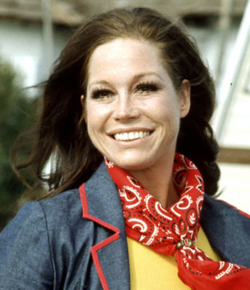 In other news, Mary Tyler Moore died two days before John Hurt, on Wednesday, January 25. You young ‘uns may not remember, unless you catch reruns, but Ms. Moore starred on The Dick Van Dyke Show Laura Petrie, wife of Van Dyke’s Rob. She broke the mold of the then current (1960s) suburban housewives on television sitcoms; her Laura was well-read (she often had a book in her hand) talented (she was a dancer), fashion-forward (when Laura started wearing Capris, every housewife in America started wearing the cropped pants), daring (she dyed her hair blonde), and sexy (there was no doubt in anyone’s mind that Rob and Laura closed the door to their bedroom for a reason.) And she and Rob had fights, too.
In other news, Mary Tyler Moore died two days before John Hurt, on Wednesday, January 25. You young ‘uns may not remember, unless you catch reruns, but Ms. Moore starred on The Dick Van Dyke Show Laura Petrie, wife of Van Dyke’s Rob. She broke the mold of the then current (1960s) suburban housewives on television sitcoms; her Laura was well-read (she often had a book in her hand) talented (she was a dancer), fashion-forward (when Laura started wearing Capris, every housewife in America started wearing the cropped pants), daring (she dyed her hair blonde), and sexy (there was no doubt in anyone’s mind that Rob and Laura closed the door to their bedroom for a reason.) And she and Rob had fights, too.
Then, in 1970, she broke the mold again, starring as single woman Mary Richards “making it on her own” working in the newsroom of a small television network in Minneapolis, Minnesota. Originally Mary Richards was going to be divorced, but there are two reasons that didn’t happen: divorced women were still an anathema to network execs in 1970, and there was actual fear that the audience would think that Laura Petrie had divorced Rob, and which would totally kill the show before it even got started. So the suits decided that Mary Richards had broken off her engagement. Along with a stellar cast that included Ed Asner as her boss Lou Grant, Valerie Harper as her best friend Rhoda Morgenstern, Ted Knight as the dimwit anchorman Ted Baxter, Betty White as devious, superficial Sue Ann Nivens, Cloris Leachman as neighbor Phyllis Lindstrom, Georgia Engle as Georgette Franklin, Ted Baxter’s ditzy yet smart girlfriend, and Gavin MacLeod as news writer Murray Slaughter, The Mary Tyler Moore Show won 29 Emmys and three Golden Globes, along with too many honors to mention.
And though the network chickened out of allowing Mary to be divorced, along the way there were plenty of separations, divorces, living together, and, yes, marriages. But Mary Richards ended the show as she started – single and living alone.
Journalist and television anchor Jane Pauley, writing in the New York Times on Thursday, January 26, noted that the “The Mary Tyler Moore Show started several years before two words, ‘and women,’ were inserted into an F.C.C. affirmative action clause pertaining to television station hiring. That might have helped women like me get a job, but Mary Richards may already have opened as many doors; she had made a woman in the newsroom seem normal.”
And speaking of death – one that occurs off-screen but will drive the plot of the show’s first season – I watched the premiere of Riverdale on Thursday night.
So far, not crazy over it.
Here are my texts to editor Mike about it:
“I thought it sucked.”
“That was the only funny part, if you’re an Archie fan. Lots of very weird scenarios running through this dirty mind.” (Regarding the scene between Archie and Miss Grundy doing the dance of the two-backed snake in the car.)
“Trying too hard.”
“Betty and Veronica instant friends? Ronnie would definitely not feel any guilt right away.” (Regarding getting it on with Archie.)
“Just seemed like it was plotted from one of those computer programs on how to write a screenplay.”
“Dialogue seemed false.”
“Best one was Ronnie’s mother.”
“Well, maybe next week will be better. Some of Buffy’s first season sucked, too.”
“I love Archie, too.”
“Trying too hard to be Twin Peaks.”
“Too hard.”
“Gonna eat dinner.”
Wait.
That one was about my growling stomach, not Riverdale.
 I’ve been driving a lot more since my move to the Finger Lakes and I’ve been trying to use my time wisely. For music, I catch up on Pete Fornatale’s Mixed Bag from WFUV and ComicMix’s own Mike Gold’s Weird Sounds Inside the Gold Mind from The Point Radio. Both offer great tunes and insightful, thoughtful commentary.
I’ve been driving a lot more since my move to the Finger Lakes and I’ve been trying to use my time wisely. For music, I catch up on Pete Fornatale’s Mixed Bag from WFUV and ComicMix’s own Mike Gold’s Weird Sounds Inside the Gold Mind from The Point Radio. Both offer great tunes and insightful, thoughtful commentary.
And for thoughtful discussion, I’ve been really enjoying John Siuntres’s Word Balloon Podcast. John’s an incredibly passionate interviewer with a deep knowledge of and respect for pop culture and comics. Each week, he sits down to have an extended conversation with a creator. John has the uncanny talents of getting people to open up (often a creator will say “I haven’t told anyone this before”) and for making the listener feel like he or she is part of it all too. When I listen to Word Balloon, I feel like I’m sitting right there with them, but just can’t get a word in edgewise.
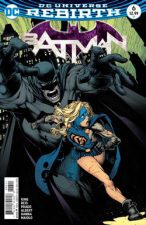
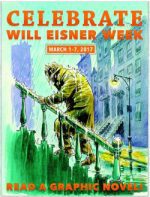 Recent interviews have included:
Recent interviews have included:

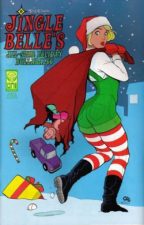 Ryan Browne – on Image’s new Curse Words Normally, I have passed over this series, but the passionate discussion and insights on the Word Balloon Podcast got me excited enough to give it a try.
Ryan Browne – on Image’s new Curse Words Normally, I have passed over this series, but the passionate discussion and insights on the Word Balloon Podcast got me excited enough to give it a try.I’ve been doing more writing, and I just finished my first article for TwoMorrow’s Back Issue! magazine. Editor Michael Eury asked me to write about the 80s comic series from DC called Thriller. Created by Robert Loren Fleming and Trevor Von Eeden, Thriller was one of those innovative series that DC launched during the excitement of non-traditional comics like Frank Miller’s The Dark Knight Returns & Ronin, Barr and Boland’s Camelot 3000, and Howard Chaykin’s The Shadow. During my research, it was amazing to find out how many fans fondly remember Thriller too.
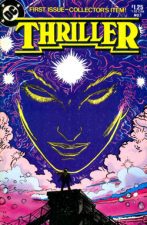 Maybe it was the tagline. Fans vividly remember how the series announced, “She has seven seconds to save the world!” This actually had a double meaning. On one hand, Trevor Von Eeden’s innovative page layouts pushed the reader along the page with a real sense of urgency. And we were all soon to find out that the main character had seven agents, called “seconds” that she guided on her Mission: Impossible-like adventures.
Maybe it was the tagline. Fans vividly remember how the series announced, “She has seven seconds to save the world!” This actually had a double meaning. On one hand, Trevor Von Eeden’s innovative page layouts pushed the reader along the page with a real sense of urgency. And we were all soon to find out that the main character had seven agents, called “seconds” that she guided on her Mission: Impossible-like adventures.
Maybe it was characters. Robert Loren Fleming packed Thriller with so many unique characters. Most series would build a story around one fresh new protagonist. Fleming had eight heroes, two villains and another half-dozen supporting characters that the reader was dying to learn more about. And that was just in the first story arc.
Maybe it was the creative risks the creators took. Robert Loren Fleming and Trevor Von Eeden were trying something new and different. They took risks on a very public stage. They didn’t play it safe. They gave it 110% and left it all onstage. We all can applaud that. And even after all these years, that’s just so very impressive.
And I was able to dig up some fantastic insights and track down the startling truth behind a secret Thriller rumor. Back Issue! #98, focusing on DC in the 80s, will be on sale this July, just in time for San Diego Comic-Con. It should be a lot of fun.
This coming week, Marvel is issuing the second part of my work on Heroes For Hire and, as I did when the first volume came out, I thought I’d talk a little bit about it and why I made some choices that I did and what I was thinking when I created the stories.
Background info: my run on H4H began in 1997 and ran for 19 issues. The team was a corporate entity, hiring out groups of superheroes for various missions. Luke Cage and Iron Fist were the core, with the Original Human Torch, Jim Hammond, running the business. Lots of characters cycled in and out, the most constant being White Tiger, Ant-Man (Scott Lang), Black Knight and Thena of the Eternals. We also had lots of guest stars such as Hercules, Wolverine, Shang-Chi, She-Hulk and Deadpool who, not surprisingly, was featured on the cover.
Deadpool is probably one of the main reasons Marvel is gathering this collection right now, along with the fact that Luke Cage and Iron Fist both either have had or will have a series on Netflix that will lead into the Defenders miniseries. And, maybe, the fact that I wrote Suicide Squad and that movie is now out on DVD, Blu-Ray, and so on. Ah, name recognition!
Often the guest stars would appear depending on availability and also on with whom I wanted to play. That accounts a lot for Deadpool’s appearance. ‘Pool is a lot of fun to write; he has a deep streak of whacky and I like whacky.
In fact, the entire series has a deep streak of whacky as best exhibited by the narrator. The voice of the narrator started normally but rapidly developed into sort of a character of its own. I was influenced by Stan Lee’s way of talking to the reader, calling them “effendi” and promising to get them caught up when the story started in the middle of a fight scene (which is one of the best ways ever to start a comic). My narrator would complain about not being told what’s going on and once panicked when there was a crash and it appeared all the heroes were dead. She-Hulk, who was also a lawyer, later broke the fourth wall and fired the narrator. We had a new, normal narrator after that; even the font changed to establish this was not the “same” narrator.
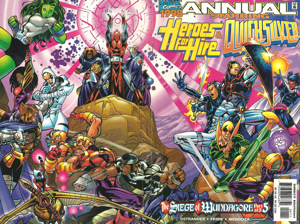 I have no idea what readers thought but, hey, I was amusing myself.
I have no idea what readers thought but, hey, I was amusing myself.
Smack dab in the middle of this we had a five-part crossover with the Quicksilver book that I was writing along with Joe Edkin. That year, Marvel was doing “paired” Annuals and, since I was involved with both H4H and Quicksilver, they got paired. Joe and I had inherited a storyline involving the High Evolutionary, the Knights of Wundagore, Exodus and the Acolytes, and ultimately Man-Wolf. In retrospect, Joe and I probably should have wound up that storyline sooner than we did and gone on to our own ideas. We hoped that linking the Quicksilver book with H4H would create an event and would help increase the readership of Quicksilver.
It didn’t work out that way. Quicksilver actually got canceled and I think we hurt H4H in the process. There were just too many characters and plenty of switching sides. Maybe we should have had a scorecard.
The pencilers on the series were generally top notch. Pachalis (Pascual) Ferry was our regular penciler and he’s terrific. Very flowing artwork but with a sense of energy and excitement akin to Jack Kirby. Excellent storyteller, too.
My other favorite penciler remains Mary Mitchell for a lot of good reasons. I first encountered Mary at a Chicago Con; incredible storytelling skills, a great sense of architecture and place, and even minor characters seemed to have a real life. They all had their own stories and we could have followed those but we were following these other characters instead. I helped her get some of her first jobs and she eventually came to live with Kim Yale and me. She stayed during Kim’s fight with breast cancer and stayed after her death. Much later, she and I became a couple and still are but at the time of her doing the story in this volume, we were just good friends.
The story was a solo adventure of the Black Knight who was a favorite character of mine and who I had brought into the group.
Another favorite character that I brought into the comic was Mrs. Arbogast, the older and sometimes acerbic secretary who had worked for Tony Stark. She has a dry disdain similar to Alfred in the Batman movies.
We had lost some readership but it was growing again but this was the Ron Pearlman era when the company was owned and operated by bunch of people who clearly didn’t know what they were doing. One underling decided he would curry favor by saving money by canceling a bunch of books – including H4H. We didn’t really warrant it. Said underling then left the company a short time later. Such is life.
I’m proud of my work on H4H. My approach was consciously different from my work at DC; a bit looser, a bit more in what I considered to be “the Marvel manner.” A plot might not complete in one issue but end at the start of the next issue and we would then plunge into the next story. Sometimes the pace was a bit breathless and that was all by design. I wanted H4H to be fun and the best way to make that happen was to have fun myself. I did and I think it shows. If you take a look, I think you’ll have fun, too.
Excelsior!